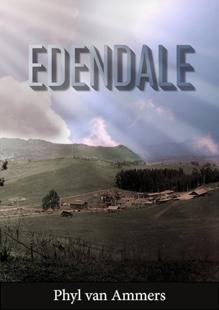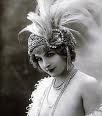The Twilight of Industrial Society
Leslie Evans
I spent several days at the end of May on a farm in the Appalachian Mountains near Artemas, Pennsylvania. Some 180 people had gathered there for a conference billed as The Age of Limits: Conversations on the Collapse of the Global Industrial Model. Most had driven in from the Eastern seaboard, camping in little dome-shaped tents in the dense forest that fills the majority of the 165 acre Four Quarters InterFaith Sanctuary. Four Quarters is nominally a church. Scattered around the property are little altars – to the Indian elephant god Ganesh, the Buddha, and other deities. The central spiritual focus is its Circle of Standing Stones, forty-two 10,000 pound monoliths set upright in a half circle, erected with volunteer labor over the last seventeen years. They plan to complete the circle in the decade to come. The sanctuary is off the grid, provides its own electricity (shut off at night), and grows most of its own food on thirty acres of arable land. The operation’s patriarch, Orren Whiddon, a fifty-five-year-old retired mechanical engineer, oversees a first-rate machine shop on the premises that makes replacement parts for people in nearby towns.
I heard of the conference from a posting on the Energy Bulletin website ( www.energybulletin.net ) of the Post Carbon Institute, a think tank in Santa Rosa, California, devoted to the study of natural resource depletion, particularly of oil, climate change, and limits to economic growth. Four of the most prominent writers on peak oil and the threat it poses to the world economy were scheduled to speak: John Michael Greer, author of The Ecotechnic Future: Envisioning a Post-Peak World ; Tom Whipple, a retired CIA analyst who is editor of the daily Peak Oil News and the weekly Peak Oil Review, both published by the Association for the Study of Peak Oil-USA; Gail Tverberg, who writes widely under the title Gail the Actuary and maintains the website Our Finite World ( www.ourfiniteworld.com ); and Dmitry Orlov, a Russian-born author who witnessed the collapse of the Soviet Union and predicts a similar fate for the United States. Read more
SWAPPING STATE DINNERS FOR TV DINNERS
By Bob Vickrey
Actress Meryl Streep’s skillful portrayal of the great gourmet chef Julia Child in the 2009 movie “Julie and Julia” prompted a vivid memory of my first meeting with Southwest cooking legend Helen Corbitt.
In the early 1970’s I traveled to Dallas as a publisher’s representative for a luncheon with Helen and Stanley Marcus, President of Neiman Marcus, to arrange a book signing party launching Corbitt’s latest cookbook. She was then Executive Chef at Neiman’s famous Zodiac Room, and our upcoming event was expected to rival any Dallas social shindig that year. Read more
Edendale Now Available in Paperback
 Last month we announced that Phyl van Ammers novel Edendale, long serialized here on Boryanabooks, had been published as an Amazon Kindle book. Now we can add that there is a full paperback edition, also available from Amazon. Now is your chance to read Phyl van Ammers’ generations-long tribute to the people of the near mythical Edendale in Los Angeles’s northern hills in one convenient format. Her warm reconstruction of the past seventy years of Echo Park, Silver Lake, and their adjacent neighborhoods will please current and former residents and the numberless visitors who know these streets well. Read more
Last month we announced that Phyl van Ammers novel Edendale, long serialized here on Boryanabooks, had been published as an Amazon Kindle book. Now we can add that there is a full paperback edition, also available from Amazon. Now is your chance to read Phyl van Ammers’ generations-long tribute to the people of the near mythical Edendale in Los Angeles’s northern hills in one convenient format. Her warm reconstruction of the past seventy years of Echo Park, Silver Lake, and their adjacent neighborhoods will please current and former residents and the numberless visitors who know these streets well. Read more
Photog Susan McRae captures images of “counterculture” icon Art Kunkin, who is now an alchemist and plans to live forever.
Deep In Echo Park, A Bohemian Nexus
BY LIONEL ROLFE
Long time Echo Park residents Anne Stein and Gary Leonard are planning to showcase the paintings of Anne’s father, Philip Stein, at their Take My Picture Gallery in downtown Los Angeles. They are doing so as the restored Siqueiros mural “American Tropical” is about to be unveiled in Olvera Street.
The timing is not just coincidence. Read more
On the Track of the Elusive Baron Long
Leslie Evans
I first heard of Baron Long twenty years ago. My wife Jennifer and I had bought a 1910 Craftsman house near USC in the West Adams section of Los Angeles and we were researching its history. We had discovered that from 1921 to 1958 it had been owned by a branch of the Furlong family, founders and effective co-owners of the small industrial city of Vernon five miles southeast of downtown Los Angeles, incorporated in 1905. I had worked in Vernon for a year in an electric motor repair shop in the early 1980s and knew it to live up to its motto, “Exclusively Industrial.” Our research at the Los Angeles main library turned up a small out-of-print book, Leonis of Vernon by James Kilty, that revealed an extraordinary story of the little town’s early days, when it was the hard-drinking center of Los Angeles night life, boxing capital of the nation, and the bane of the Los Angeles Times and at least some of polite society. Read more
THE PERILOUS JOURNEY OF A RELUCTANT CORPORATE POET
By Bob Vickrey
As I reported for my first day of work in the fall of 1972, I stepped into the creaky old Boston office headquarters of America’s oldest publishing house and thought perhaps that I had stepped back into the 19th Century.
Houghton Mifflin had indeed been linked to that century by publishing authors such as Emerson, Thoreau, Longfellow, and Harriet Beecher Stowe.
One might have guessed the history preserved there by simply walking the hallways of this hundred plus year-old dilapidated brick structure located just down Park Street from the ornate State House. The front side faced Boston Common and the backside office windows looked out on the Boston Granary which was home to considerable Colonial history including the grave sites of Paul Revere, Samuel Adams, and John Hancock. Read more
Commentary On Denis Johnston’s Shaw Article
Dear Editor:
The latest Boryanabooks issue is, as you say, the biggest and best to date. I very much enjoyed Denis Johnston’s tour of the Shavian personality and life. In high school I started reading Shaw avidly and fell in love with “Heartbreak House,” Caesar and Cleopatra” and “Man and Superman.” In later years the attraction of these and other plays dimmed, though “Joan” still holds up well.
Johnston is also right about the T. E. Lawrence and Charlotte Shaw relationship. She and Shaw (as he was officially named then) entered into a kind of epistolary friendship that lasted for years. Both confessed to each other things they wouldn’t confess to anyone else, particularly the rape they both suffered, his at Deraa by the Turks and hers at home by her father. This was the reason she only agreed to marry GBS if the relationship was to be strictly sexless. TEL was one of the four or five greatest English letter writers, and the combined collection of correspondence between them fills three large volumes. The copyright to all TEL’s writings is owned by Jeremy Wilson of Castle Hill Press, which has been printing superbly edited but very expensive volumes of all his writings. TEL’s younger brother transferred copyright before his death because Jeremy published what is still the longest, most detailed and most accurate biography of TEL. He thought very highly of Shaw’s plays, though in private he was sometimes critical of the socio-economic-philosophical underpinnings of many. GBS himself played a very important role in helping to edit the 1922 Oxford Edition of “Seven Pillars of Wisdom” after he finished the hand-written manuscript. He had eight copies printed in double-column newspaper-type pages at the Oxford Times. This edition ran to 350,000 words but lacked literary polish. Shaw made massive editorial changes in shortening, tightening and simplifying it. That produced the famous 1926 subscriber’s edition, published for the mass market after TEL’s death without all the magnificent typography, binding, design and commissioned art that he had reproduced in color prints. The huge expense of printing the subscriber’s edition nearly bankrupted him, so he published a cut down and bowdlerized potboiler version of “Seven Pillars” to pay expenses, “Revolt in the Desert.” That potboiler was an international success, though Lawrence always disowned it, but he used the money to pay off the subscriber’s edition and put all the profits into an account for retired RAF aircraft men and widows. Read more
DENIS JOHNSTON ON SHAW
Denis Johnston was an Irish playwright who knew George Bernard Shaw and wrote about him. This article was compiled and edited by his son Rory Johnston, who works as a wire service editor in Los Angeles. Johnston (1901-84) was the last of the generation of Sean O’Casey, Micheál MacLiammóir, Barry Fitzgerald, F.J. McCormick and others who brought the Irish theatre its world-wide fame. He was a protégé of Yeats and Shaw. His first play The Old Lady Says “No!” took Dublin by storm in 1929 with its extraordinary originality and put the Dublin Gate Theatre on the map. His second play The Moon in the Yellow River (1931) established his international reputation. It has been performed on many stages around the globe in five different languages and in various mediums, its cast including such names as Jack Hawkins, Errol Flynn, James Mason, Claude Rains, and James Coco.
When I was a schoolboy in Dublin I went to the Abbey Theatre one evening expecting to see an amusing play by Lady Gregory called The Workhouse Ward. I was disappointed to find there had been some mistake, and that instead I was in for a debate between a fat man called Chesterton and a thin man called Shaw. What the subject was I don’t remember, but the fat man was very bluff and jolly, and tried to raise a laugh at the expense of the thin man by praising drink and overeating and good living generally. But then the thin man got to his feet. Read more
Photog Susan McRae Captures An Illusion From The Past














